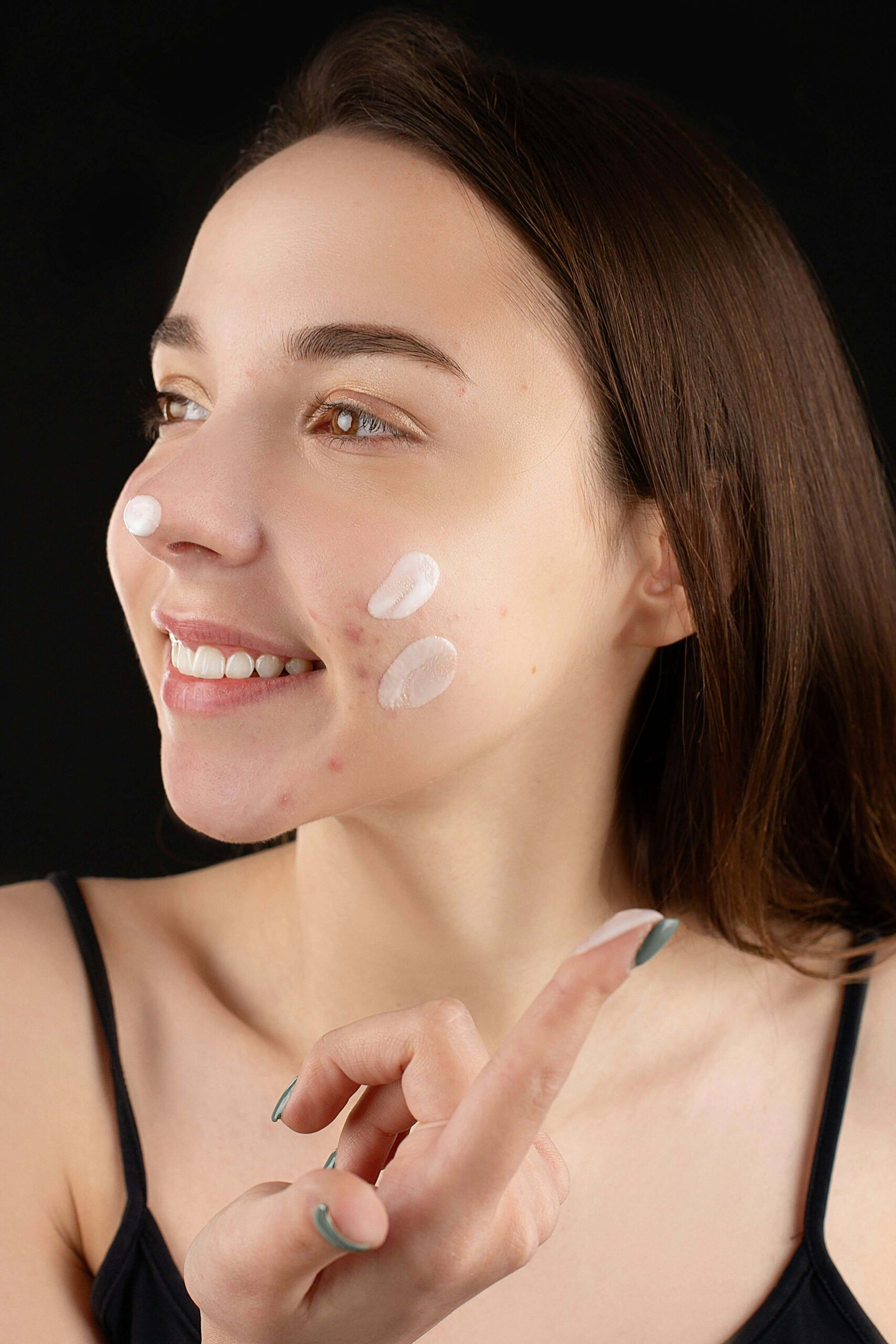How to Treat Post-Inflammatory Hyperpigmentation: A Science-Based Approach
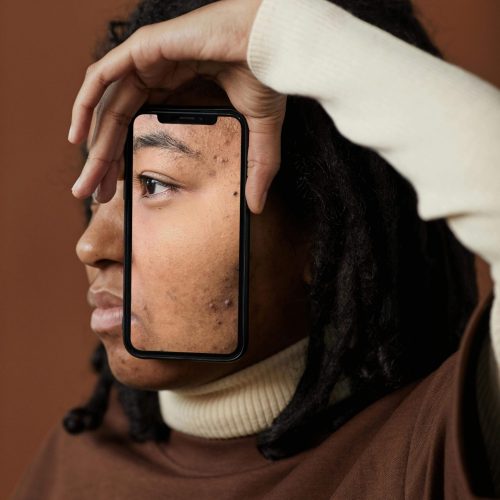
The relief of finally clearing up acne is hard to beat, but the lingering dark spots it leaves behind can feel frustrating. These darkened areas, known as post-inflammatory hyperpigmentation (PIH), can be challenging to manage. In this blog, we’ll explore the science behind PIH, its causes, and the most effective treatments to address it. With time, consistency, and evidence-backed skincare practices, brighter, healthier skin is achievable.
What Is Post-Inflammatory Hyperpigmentation?
When your skin heals from inflammation—whether caused by acne, a scratch, or another skin condition—you may notice darkened spots left behind. This is post-inflammatory hyperpigmentation (PIH), a condition characterized by discolored patches or spots that form as part of your skin’s healing response.
PIH occurs when the skin produces excess melanin, the pigment responsible for skin color, in response to inflammation or trauma. While these spots are commonly brown or dark red, their color can range from pink to deep purple depending on your skin tone. People with deeper complexions are particularly susceptible to PIH due to higher melanin levels.
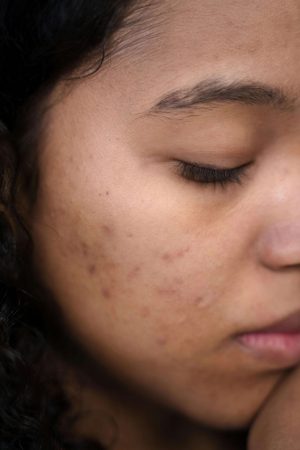
Post-Inflammatory Hyperpigmentation (PIH): Symptoms and Appearance
Post-inflammatory hyperpigmentation (PIH) is characterised by flat patches of discolored skin that can vary in color depending on your skin tone and the depth of the pigmentation. These areas may appear white, pink, red, purple, brown, or black.
PIH can occur in individuals of all skin types, but it is often more pronounced and lasts longer in people with medium to dark complexions. This is because darker skin contains more melanin, increasing the likelihood of hyperpigmentation following certain skin conditions or injuries.
Both men and women can experience PIH, and its appearance can differ widely in terms of shape, size, and severity. On lighter skin tones, PIH marks often show as red or light brown, while on darker skin, they may appear deep brown or black, making them more noticeable. Recognizing how these marks look on different skin tones is essential for identifying and addressing them effectively.
Are These Spots Acne Scars?
No—post-inflammatory hyperpigmentation or PIH is not the same as true acne scarring.
- PIH refers to temporary discoloration resulting from inflammation. It is flat and fades over time with proper care.
- True acne scars, on the other hand, involve permanent changes in skin texture. These scars can appear as indentations or raised areas and are caused by the overproduction or loss of collagen during the healing process.
Causes of Post-Inflammatory Hyperpigmentation (PIH)
Post-inflammatory hyperpigmentation (PIH) develops when the skin becomes inflamed or irritated due to various triggers. This leads to the production of excess melanin, the pigment responsible for skin color, which causes darkened patches. PIH is more common in individuals with darker skin tones because they naturally have higher melanin levels.
Several skin conditions and injuries can result in PIH, including acne, burns, eczema, infections, bug bites, psoriasis, lichen planus, and pseudofolliculitis barbae (razor bumps or ingrown hairs). Procedures like chemical peels, laser treatments, radiation therapies, and dermabrasion can also contribute to PIH. Additionally, sunburns can worsen the condition as UV rays stimulate melanin production.
PIH can occur in different layers of the skin:
- Epidermal PIH : Located in the top layer of the skin, it is typically easier to treat using topical creams and lotions.
- Dermal PIH : Found in deeper layers, it is more challenging to address due to the depth of the pigment.
- Mixed PIH : Involves both layers, combining the complexities of dermal and epidermal pigmentation.
Some Estheticians and doctors often use special tools, like a Wood’s lamp, or perform a skin biopsy to determine the depth of pigmentation. Treating epidermal PIH is usually more straightforward, but deeper or mixed forms require advanced treatments and often take longer to improve.
Inflamed skin conditions, like acne, are a common cause of PIH. Even minor blemishes can leave dark spots, but larger, more inflamed breakouts usually result in more noticeable marks. Popping or picking at pimples increases the likelihood of PIH as it creates additional inflammation, making the spots darker and harder to treat.
Understanding the causes and types of PIH is essential for selecting the right treatment and preventing further pigmentation issues.
Pathophysiology of Hyperpigmentation
Hyperpigmentation occurs due to changes in the production and distribution of melanin, the pigment responsible for skin color. Here’s a simplified overview of the process:
Origin of Melanocytes:
- Melanocytes, the cells that produce skin pigment, originate embryonically from neural crest cells.
- These cells are located in the basal layer at the junction of the dermis and epidermis.
Role of Melanosomes:
- Melanosomes are organelles within melanocytes that produce and store melanin.
- Melanin is transferred from melanocytes to neighboring keratinocytes, giving skin its color.
Melanin Production:
- The amino acid L-Tyrosine acts as the starting material for melanin synthesis, processed through enzymatic reactions called the Raper-Mason pathway.
- The melanin production process, known as melanogenesis, occurs inside melanosomes.
- Two types of melanin are formed:
- Eumelanin : Produces black or brown pigment.
- Pheomelanin : Produces yellow or red pigment.
Key Enzymes in Melanin Synthesis:
- Tyrosinase : A copper-containing enzyme and the rate-limiting factor in melanin production.
- Other enzymes like TYRP-1 and TYRP-2 are also crucial in the melanogenesis pathway.
- These enzymes are regulated by a transcription factor called MITF (Microphthalmia Transcription Factor).
Regulators of Melanogenesis
- Hormones like α-MSH (Alpha-Melanocyte-Stimulating Hormone) and ACTH (Adrenocorticotropic Hormone) play a significant role in controlling the melanogenesis process.
- L-Tyrosine and L-DOPA levels affect melanosome production and enzyme activity, influencing pigment production.
Skin Tone Variations:
- In darker skin, melanosomes remain intact as they reach the outer layers of the skin, while in lighter skin, melanosomes break down into smaller fragments or “melanin dust.”
- This difference contributes to the diverse skin tones and complexions seen across individuals.
Factors Influencing Hyperpigmentation:
- Disruption in the melanogenesis process can lead to hyperpigmentation.
- Causes can be intrinsic (e.g., genetic predisposition, hormonal changes) or extrinsic (e.g., UV exposure, skin inflammation, or injury).
Understanding this process helps in identifying the root causes of hyperpigmentation and designing effective treatment strategies.
How to Heal Post-Inflammatory Hyperpigmentation
Healing PIH requires a combination of patience, proper skincare, and advanced treatments. On average, dark spots may take 6-12 months to fade, but this timeline can vary based on your skin type, pigmentation severity, and skincare regimen.
Key Tips for PIH Recovery
1. Maintain a Gentle Routine
Use a pH-balanced, non-irritating cleanser daily to remove dirt and impurities while preserving your skin’s natural barrier.
2. Exfoliate Strategically
Opt for chemical exfoliants like alpha hydroxy acids (AHAs) or beta hydroxy acids (BHAs) 2-3 times per week to encourage skin cell turnover and fade discoloration.
3. Incorporate Brightening Ingredients
Apply products containing scientifically proven brighteners to reduce dark spots and even skin tone. We’ll delve into these ingredients below.
4. Protect with Sunscreen
UV exposure worsens hyperpigmentation. Use a broad-spectrum sunscreen with SPF 30 or higher daily—even on cloudy days.
5. Consider Professional Treatments
Stubborn PIH may require advanced options like chemical peels, microneedling, or laser treatments to accelerate results.
6. Stay Consistent
Skincare takes time. Follow your routine diligently, and avoid picking at your skin to prevent further inflammation.
Topical Treatments for PIH
Vitamin C
What it does:
Vitamin C is a potent antioxidant that neutralizes free radicals, reduces oxidative stress, and inhibits the enzyme tyrosinase, which is essential for melanin production. This dual action lightens existing hyperpigmentation and prevents new dark spots from forming.
Scientific Insights:
Vitamin C boosts collagen production, which improves skin texture and elasticity. It also works synergistically with other ingredients, such as ferulic acid and vitamin E, to enhance its stability and effectiveness.
Best Formats:
Look for vitamin C serums with L-ascorbic acid in concentrations of 10-20%, as this form is most bioavailable and effective.
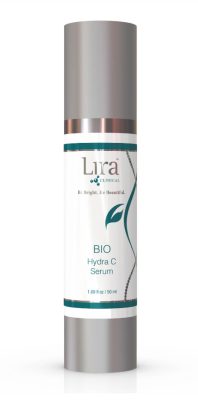
Niacinamide
What it does:
Niacinamide, a form of vitamin B3, reduces inflammation and inhibits the transfer of melanosomes (melanin-containing cells) from melanocytes to keratinocytes. This process helps to lighten dark spots and improve skin tone.
Scientific Insights:
Studies show that niacinamide can significantly reduce hyperpigmentation within 8-12 weeks of consistent use. It also strengthens the skin barrier by boosting ceramide production, which improves hydration and reduces sensitivity.
Best Formats:
Effective in concentrations between 2-10%, niacinamide is well-tolerated and suitable for all skin types.
Azelaic Acid
What it does:
Azelaic acid is a naturally occurring dicarboxylic acid that reduces melanin production by inhibiting tyrosinase and decreasing oxidative stress. It also has anti-inflammatory and antibacterial properties, making it ideal for acne-prone skin.
Scientific Insights:
Azelaic acid targets abnormal melanocytes, making it especially effective for conditions like melasma and PIH. It also promotes gentle exfoliation, helping to renew skin cells without irritation.
Best Formats:
Most effective in concentrations of 15-20%, azelaic acid is available in creams, gels, and foams.
Kojic Acid
What it does:
Kojic acid, derived from fungi during the fermentation of rice, inhibits tyrosinase activity, thereby reducing melanin synthesis.
Scientific Insights:
Research has shown that kojic acid not only lightens pigmentation but also has antioxidant and antimicrobial properties, making it a versatile ingredient for various skin concerns.
Best Formats:
Typically found in concentrations of 1-4%, kojic acid is often combined with other lightening agents to enhance its effectiveness.
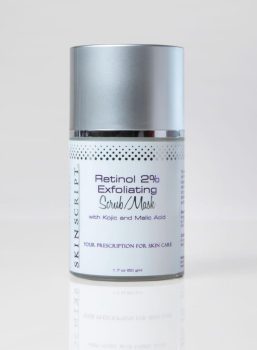
Arbutin
What it does:
Arbutin is a natural derivative of hydroquinone that safely reduces melanin production without the irritation often associated with hydroquinone.
Scientific Insights:
Arbutin gradually fades dark spots and evens skin tone, making it a gentle yet effective option for long-term use.
Best Formats:
Look for alpha-arbutin, a more stable and potent form, in serums or creams at concentrations of 2-4%.
Licorice Extract
What it does:
Licorice extract contains glabridin, which inhibits tyrosinase activity and reduces inflammation, leading to brighter skin and less redness.
Scientific Insights:
Licorice is particularly beneficial for sensitive skin types, as it soothes irritation while targeting pigmentation.
Best Formats:
Often included in serums or creams, licorice extract pairs well with niacinamide or azelaic acid for enhanced results.
Tranexamic Acid
What it does:
Tranexamic acid interferes with the interaction between melanocytes and keratinocytes, reducing melanin transfer and lightening hyperpigmentation.
Scientific Insights:
Clinical studies have shown significant improvement in melasma and PIH when using tranexamic acid, particularly in combination with other actives like niacinamide.
Best Formats:
Effective in concentrations as low as 2%, tranexamic acid is gentle enough for daily use.
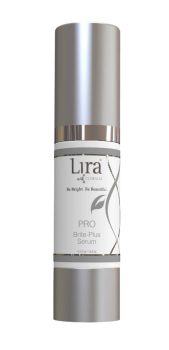
Bakuchiol
What it does:
A plant-based retinol alternative, bakuchiol enhances collagen production, reduces pigmentation, and improves skin texture.
Scientific Insights:
Studies show that bakuchiol has comparable efficacy to retinol without the associated irritation, making it suitable for sensitive skin.
Best Formats:
Found in serums or creams, bakuchiol is often combined with antioxidants for a well-rounded approach to PIH.
Hydroquinone
What it does:
Hydroquinone is a gold-standard treatment for hyperpigmentation. It works by inhibiting tyrosinase, the enzyme essential for melanin synthesis, effectively lightening dark spots over time.
Scientific Insights:
Hydroquinone is highly effective for treating moderate to severe hyperpigmentation, including melasma and PIH. However, its use is often recommended for short-term treatments (typically 3-6 months) to avoid potential side effects like ochronosis (skin darkening) with prolonged use.
Best Formats:
Commonly available in prescription-strength creams (4%) or over-the-counter formulations (2%). Hydroquinone pairs well with retinoids and corticosteroids for enhanced efficacy but should always be used with sunscreen due to increased photosensitivity.
Retinoids (Retinol, Tretinoin, Adapalene)
What it does:
Retinoids promote cellular turnover, helping to fade existing pigmentation and prevent new spots from forming. They also stimulate collagen production and improve overall skin texture.
Scientific Insights:
Retinoids accelerate the exfoliation of pigmented skin cells and reduce the transfer of melanin to the epidermis. Studies show that tretinoin, in particular, is highly effective for treating both PIH and melasma when used consistently over 8-12 weeks.
Best Formats:
Retinol is a milder option for over-the-counter use, while prescription-strength tretinoin or adapalene (0.1%-0.3%) may be required for more severe cases. Use with caution to avoid irritation and pair with a moisturizer to maintain the skin barrier.
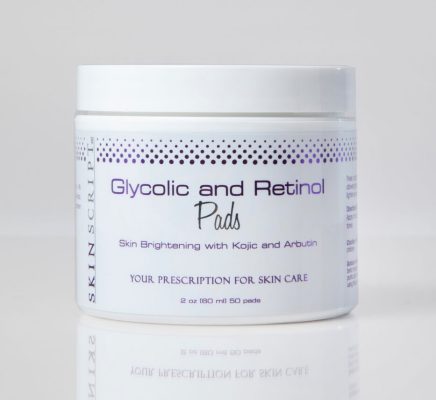
Alpha Hydroxy Acids (AHAs)
What they do:
AHAs, such as glycolic acid, lactic acid, and mandelic acid, gently exfoliate the surface of the skin, removing dead cells and encouraging the growth of new, evenly pigmented skin.
Scientific Insights:
Glycolic acid, derived from sugarcane, is the smallest AHA molecule, allowing it to penetrate deeply into the skin. Studies show that a 10-20% glycolic acid formulation can effectively reduce PIH while improving skin texture and radiance. Lactic acid is gentler and provides additional hydration, making it ideal for sensitive skin types.
Best Formats:
AHAs are found in serums, toners, and chemical peels. Use concentrations of 5-10% for daily use and higher percentages (up to 30%) for weekly or bi-weekly treatments.
Beta Hydroxy Acids (BHAs)
What they do:
BHAs, such as salicylic acid, penetrate deeper into the pores due to their oil-soluble nature, making them particularly effective for acne-prone skin with PIH.
Scientific Insights:
Salicylic acid works by exfoliating dead skin cells and reducing inflammation, which helps fade dark spots while preventing future breakouts. It also has antimicrobial properties, which make it a great choice for blemish-prone skin.
Best Formats:
Effective in concentrations of 0.5%-2%, BHAs are found in cleansers, serums, and spot treatments.
Phytic Acid
What it does:
Phytic acid, a natural antioxidant derived from plants, works by chelating iron and other metals in the skin that contribute to hyperpigmentation. It also provides gentle exfoliation.
Scientific Insights:
Studies suggest that phytic acid can reduce melanin production while offering antioxidant protection, making it a safe option for sensitive or irritated skin.
Best Formats:
Phytic acid is commonly included in brightening serums or chemical peels as a complementary ingredient.
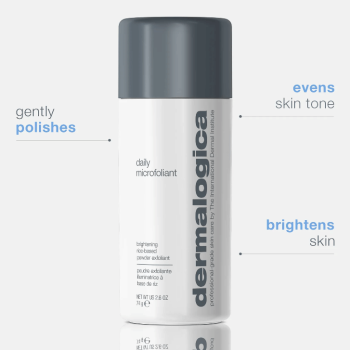
Ellagic Acid
What it does:
Ellagic acid, found in fruits like pomegranates and strawberries, is a natural tyrosinase inhibitor that helps reduce melanin production.
Scientific Insights:
Research has shown that ellagic acid provides significant improvement in hyperpigmentation with consistent use, offering both brightening and antioxidant benefits.
Best Formats:
Often formulated in serums or creams alongside other brightening agents like vitamin C.
N-Acetylglucosamine
What it does:
A derivative of glucose, N-acetylglucosamine (NAG) inhibits melanin production by reducing the activity of tyrosinase and interrupting the melanin transfer process.
Scientific Insights:
NAG is particularly effective when paired with niacinamide, as the combination provides synergistic brightening effects. Studies show it can improve uneven skin tone in as little as 8 weeks.
Best Formats:
Typically included in serums or moisturizers at concentrations of 2-5%.
Resorcinol Derivatives (e.g., Phenylethyl Resorcinol)
What they do:
Resorcinol derivatives reduce melanin production and improve uneven skin tone by inhibiting tyrosinase activity.
Scientific Insights:
Phenylethyl resorcinol, a synthetic antioxidant derived from natural resorcinol, is particularly effective at reducing dark spots and enhancing skin brightness.
Best Formats:
Often found in high-end serums and brightening products at low concentrations (0.5%-1%).
Glutathione
What it does:
Glutathione is a powerful antioxidant that reduces oxidative stress and shifts melanin production from darker eumelanin to lighter pheomelanin, effectively brightening the skin.
Scientific Insights:
Oral glutathione supplements have shown promise in improving overall skin tone, while topical formulations help target localized hyperpigmentation.
Best Formats:
Commonly included in brightening creams or injectable treatments for advanced skin rejuvenation.
Ceramides (Supporting Ingredient)
What they do:
Ceramides don’t directly treat PIH but play a crucial role in maintaining the skin’s barrier, reducing irritation and preventing further inflammation that can worsen hyperpigmentation.
Scientific Insights:
A strong skin barrier improves the efficacy of active ingredients by minimizing sensitivity and allowing for consistent use.
Best Formats:
Look for ceramide-rich moisturizers to pair with active treatments for PIH.
Epidermal Growth Factors (EGFs)
What they do:
EGFs are proteins that stimulate cell regeneration and repair, promoting healthier, more even-toned skin.
Scientific Insights:
Studies indicate that EGFs can improve discoloration and texture by accelerating the skin’s natural healing process.
Best Formats:
EGFs are often found in high-end serums designed for post-treatment care and skin rejuvenation.
By integrating these scientifically proven topical treatments into your skincare regimen, you can effectively address PIH and restore an even, radiant complexion. Always consult with a dermatologist or skincare professional to tailor a routine best suited for your skin type and concerns.
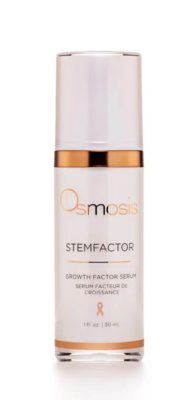
Preventing Post-Inflammatory Hyperpigmentation
Prevention is key to avoiding PIH in the first place. Here’s how to minimize your risk:
- Treat Acne Early : Addressing breakouts promptly reduces inflammation and the likelihood of pigmentation.
- Sun Protection : Use sunscreen daily to shield your skin from harmful UV rays.
- Hands Off : Avoid picking at blemishes, as this increases inflammation and pigmentation risk.
- Choose Gentle Products : Harsh skincare can irritate your skin and worsen PIH.
How Long Does It Take for Acne Hyperpigmentation to Fade?
The time it takes for post-inflammatory hyperpigmentation (PIH) to fade varies from person to person. Several factors influence this, such as:
- The depth of pigmentation
- The severity of the initial skin damage,
- Skin type
- Whether the affected area is exposed to further irritation or sun damage.
For mild cases, PIH can gradually fade over a few months as the skin naturally heals. However, deeper or more severe pigmentation may take much longer—sometimes even years—to lighten without treatment. Darker skin tones, which naturally have more melanin, often experience more stubborn and longer-lasting hyperpigmentation.
In some cases, PIH may not completely disappear on its own, but treatments can help speed up the fading process. Over-the-counter creams can work well for lighter marks, while prescription products are often more effective for deeper or older spots. Dermatologists can recommend advanced treatments, including specialized creams, chemical peels, or laser therapy, to significantly reduce pigmentation.
Sun exposure is another factor that can prolong PIH by stimulating melanin production, making dark spots worse. Using sunscreen regularly and avoiding further skin trauma are crucial steps in preventing hyperpigmentation from getting darker or lasting longer.
With the right care and treatment, most people can achieve significant improvement in PIH, even if complete fading takes time. Patience and consistent skincare are key to managing this condition.
In-Office Treatments for Persistent Post-Inflammatory Hyperpigmentation
For more stubborn cases of post-inflammatory hyperpigmentation (PIH), professional treatments performed by a dermatologist can be highly effective. Common options include:
- Chemical Peels : These use acids to remove the top layer of skin, promoting the growth of new, evenly pigmented skin.
- Laser Therapy : Targeted laser treatments can break down excess pigment in the skin.
- Microneedling : This involves creating tiny, controlled injuries to stimulate the skin’s natural repair process, improving pigmentation.
- Microdermabrasion : A gentle exfoliation technique that helps remove dead skin cells and improve skin tone.
It’s important to note that a single session of any treatment is usually not enough to achieve noticeable results. Most people require multiple sessions spaced a few weeks apart, depending on the specific treatment and the severity of the pigmentation.
Your esthetician or dermatologist will assess your skin and recommend the most suitable procedure based on your needs. Professional treatments, combined with proper aftercare, can significantly reduce PIH and restore an even skin tone over time.
Targeting Post-Inflammatory Hyperpigmentation in Katy, Texas
At Anita’s Skincare Clinic in Katy, Texas, we understand the frustration of dealing with stubborn dark spots left behind by acne or inflammation. Post-inflammatory hyperpigmentation (PIH) can be challenging, but with the right treatments and guidance, achieving a radiant, even complexion is possible. Let us help you on your journey to healthier skin by tailoring a program designed specifically for your needs.
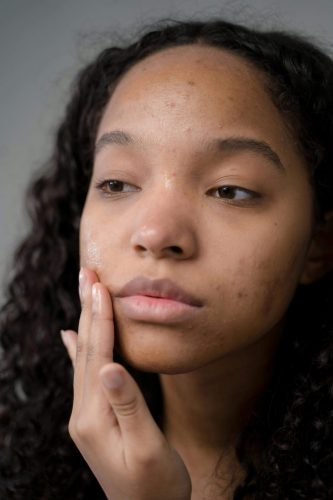
How We Help Heal Post-Inflammatory Hyperpigmentation
At Anita’s Skincare Clinic, we believe in combining science-based ingredients with expert skincare services to treat PIH. While results take time and consistency, many of our clients start seeing noticeable improvements within weeks. Here’s how we approach PIH treatment:
- Comprehensive Consultations : Our experienced esthetician will provide a thorough consultation to create a tailored treatment plan specific to your skin’s needs.
- Personalized Skincare Plans : We offer customized product recommendations and homecare routines, incorporating ingredients known to address PIH effectively.
- Advanced Skincare Treatments : Our clinic provides a range of advanced treatments, including chemical peels, microneedling, and LED therapy, designed to accelerate the fading of dark spots and restore skin balance.
- Ongoing Support and Education : You’ll receive guidance on how to maintain results with proper sun protection, skincare routines, and tips to prevent further pigmentation.
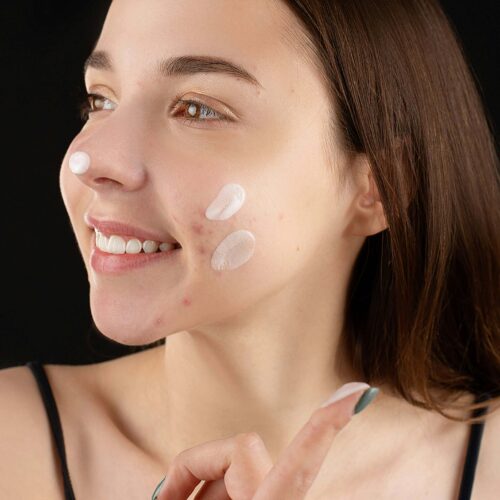
Ready to start your journey toward clearer, more even-toned skin? Contact us today at Anita’s Skincare Clinic in Katy, Texas, and schedule a consultation. Together, we can craft the perfect skincare plan tailored to your unique needs and achieve the results you deserve.

